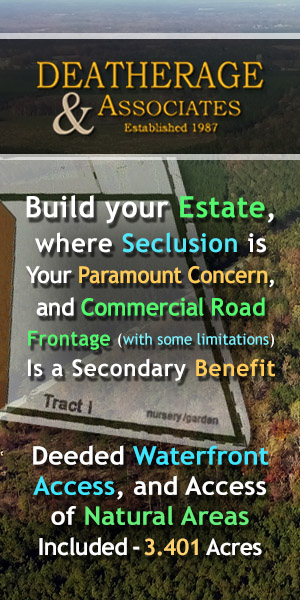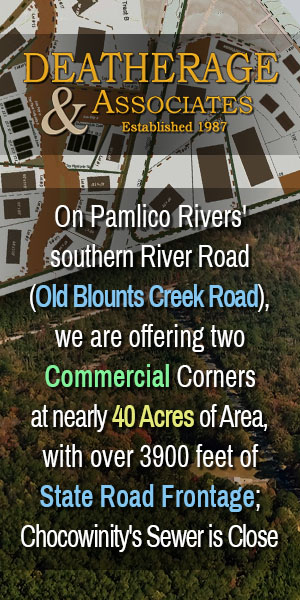REAL News for REAL People
CommenTerry: Volume Seven
Publisher's Note: These posts, by Dr. Terry Stoops, and aptly titled CommonTerry, appears courtesy of our friends at the John Locke Foundation. A full account of Dr. Stoops's posts, or him mentioned as a credible source, are listed here in BCN.
I have a pretty utilitarian view of class sizes. Sometimes smaller class sizes make a big difference. Special needs students and those who require intensive instruction or remediation surely benefit from smaller classes. Most of the time, however, adding or subtracting a few students from the average classroom does not produce a significant change in outcomes.
Moreover, the costs associated with class size reduction initiatives, from hiring additional school-based personnel to adding classroom space, are considerable. Often there are less costly and more beneficial school reforms available. In his 2010 article, "The Cost Effectiveness of 22 Approaches for Raising Student Achievement," education researcher Stuart Yeh concluded that class size reduction was less cost-effective than 12 alternative school reforms, including cross-age tutoring and computer-assisted instruction.
Politicians on both sides of the aisle champion class size reduction, because it has an intuitive appeal among constituents. Parents believe that children receive more "individualized attention," and therefore better instruction, from teachers in smaller classes. Again, this may be true when class sizes drop by five or ten children, but the small-scale reductions proposed by elected officials seldom reduce classes to these dramatically low levels.
But I will put my skepticism aside to assess a claim advanced by the Left. One left-wing commentator recently asserted that, because of Republicans, "classes are bigger" in North Carolina public schools. (I assume that "bigger" refers to the number of students in the class, rather than the weight and girth of the students or the square footage of the classroom.) Predictably, his article does not include data that substantiate the class size claim.
Earlier this month, the NC Department of Public Instruction released the 2012-13 NC School Report Cards, an annual summary of education inputs and outcomes for each school and district in the state. The report card website also includes statewide averages for various statistics. I examined three years of statewide class size data published on the website (See Facts and Stats below). According to NC DPI, the data represent the average number of students enrolled in the "typical" classroom for each grade (See Quote of the Week for more information).
According to state data, class sizes were unchanged in most grades. Last year, there was a one-student increase in the typical kindergarten and second-grade classroom. Republican legislators had actually reduced class sizes in both grades a year prior. During the 2012-13 school year, there was also a one-student decrease in the typical third-grade classroom.
One thing to keep in mind is that during the 2012-13 school year school districts were not subject to legislative class size mandates for grades 4-12. Despite the elimination of restrictions on class sizes in these grades, the typical middle school classroom was no larger than it had been in previous years.
The bottom line is that class sizes in the early grades have barely budged under the leadership of the Republican-led General Assembly. Indeed, NC DPI statistics do not support claims that evil Republicans are forcing districts to stuff unprecedented numbers of kids into classrooms.
Facts and Stats

Education Acronym of the Week
SAR -- School Activity Report
Quote of the Week
"Average K-8 classroom sizes are reported through the School Activity Report (SAR) as of the 40th day of the first semester. Reports are produced and returned to the school system's Student Information Management System (SIMS)/NC WISE coordinators for amendments.
"All class size averages for grades K-8 are for 'typical' classes. In grades K-3 a 'typical' class is defined as a self-contained class in which a teacher spends the majority of the day with the same students teaching a complete curriculum. If a school does not identify any self-contained classes in grades K-3, class size averages are based on the average enrollment in language arts classes. In grades 4-8, 'typical' classes include self-contained classes and those related to language arts, math, science and social studies. Classes designated as special education, advanced, or English as a Second Language (ESL) are excluded. Due to limitations of the data collection system, average class sizes of less than 10 students in grades K-8 are reported as N/A (not available)."
- NC Department of Public Instruction, "2012-13 Data Sources & Information: School/District Profile"
Click here for the Education Update archive.
Go Back
Do North Carolina classrooms look like the planet Gideon from Season 3, Episode 16 of Star Trek?
I have a pretty utilitarian view of class sizes. Sometimes smaller class sizes make a big difference. Special needs students and those who require intensive instruction or remediation surely benefit from smaller classes. Most of the time, however, adding or subtracting a few students from the average classroom does not produce a significant change in outcomes.
Moreover, the costs associated with class size reduction initiatives, from hiring additional school-based personnel to adding classroom space, are considerable. Often there are less costly and more beneficial school reforms available. In his 2010 article, "The Cost Effectiveness of 22 Approaches for Raising Student Achievement," education researcher Stuart Yeh concluded that class size reduction was less cost-effective than 12 alternative school reforms, including cross-age tutoring and computer-assisted instruction.
Politicians on both sides of the aisle champion class size reduction, because it has an intuitive appeal among constituents. Parents believe that children receive more "individualized attention," and therefore better instruction, from teachers in smaller classes. Again, this may be true when class sizes drop by five or ten children, but the small-scale reductions proposed by elected officials seldom reduce classes to these dramatically low levels.
But I will put my skepticism aside to assess a claim advanced by the Left. One left-wing commentator recently asserted that, because of Republicans, "classes are bigger" in North Carolina public schools. (I assume that "bigger" refers to the number of students in the class, rather than the weight and girth of the students or the square footage of the classroom.) Predictably, his article does not include data that substantiate the class size claim.
Earlier this month, the NC Department of Public Instruction released the 2012-13 NC School Report Cards, an annual summary of education inputs and outcomes for each school and district in the state. The report card website also includes statewide averages for various statistics. I examined three years of statewide class size data published on the website (See Facts and Stats below). According to NC DPI, the data represent the average number of students enrolled in the "typical" classroom for each grade (See Quote of the Week for more information).
According to state data, class sizes were unchanged in most grades. Last year, there was a one-student increase in the typical kindergarten and second-grade classroom. Republican legislators had actually reduced class sizes in both grades a year prior. During the 2012-13 school year, there was also a one-student decrease in the typical third-grade classroom.
One thing to keep in mind is that during the 2012-13 school year school districts were not subject to legislative class size mandates for grades 4-12. Despite the elimination of restrictions on class sizes in these grades, the typical middle school classroom was no larger than it had been in previous years.
The bottom line is that class sizes in the early grades have barely budged under the leadership of the Republican-led General Assembly. Indeed, NC DPI statistics do not support claims that evil Republicans are forcing districts to stuff unprecedented numbers of kids into classrooms.
Facts and Stats

Education Acronym of the Week
SAR -- School Activity Report
Quote of the Week
"Average K-8 classroom sizes are reported through the School Activity Report (SAR) as of the 40th day of the first semester. Reports are produced and returned to the school system's Student Information Management System (SIMS)/NC WISE coordinators for amendments.
"All class size averages for grades K-8 are for 'typical' classes. In grades K-3 a 'typical' class is defined as a self-contained class in which a teacher spends the majority of the day with the same students teaching a complete curriculum. If a school does not identify any self-contained classes in grades K-3, class size averages are based on the average enrollment in language arts classes. In grades 4-8, 'typical' classes include self-contained classes and those related to language arts, math, science and social studies. Classes designated as special education, advanced, or English as a Second Language (ESL) are excluded. Due to limitations of the data collection system, average class sizes of less than 10 students in grades K-8 are reported as N/A (not available)."
- NC Department of Public Instruction, "2012-13 Data Sources & Information: School/District Profile"
Click here for the Education Update archive.
| Mattie Lawson Will File for 6th District House | John Locke Foundation Guest Editorial, Editorials, Op-Ed & Politics | I was at the important meeting concerning tolls for our Bayview-Aurora ferry |
Latest Op-Ed & Politics
|
Pro death roundtable
Published: Wednesday, April 24th, 2024 @ 12:39 pm
By: Countrygirl1411
|
|
populist / nationalist anti-immigration AfD most popular party among young voters, CDU second
Published: Wednesday, April 24th, 2024 @ 11:25 am
By: John Steed
|
|
political scheme behhind raid on Mar-a-Lago
Published: Wednesday, April 24th, 2024 @ 9:16 am
By: John Steed
|
|
how many of these will come to North Carolina?
Published: Tuesday, April 23rd, 2024 @ 1:32 pm
By: John Steed
|
|
Barr had previously said he would jump off a bridge before supporting Trump
Published: Tuesday, April 23rd, 2024 @ 11:37 am
By: John Steed
|
|
Babis is leader of opposition in Czech parliament
Published: Tuesday, April 23rd, 2024 @ 10:28 am
By: John Steed
|
|
illegal alien "asylum seeker" migrants are a crime wave on both sides of the Atlantic
Published: Tuesday, April 23rd, 2024 @ 9:44 am
By: John Steed
|
|
only one holdout against acquital
Published: Tuesday, April 23rd, 2024 @ 9:01 am
By: John Steed
|






















